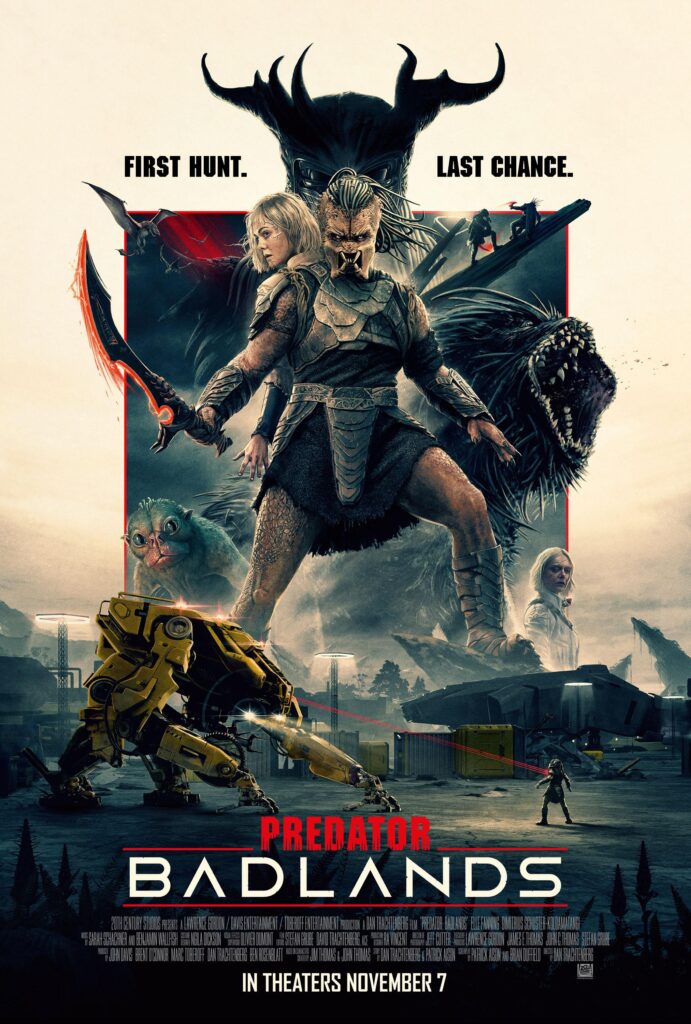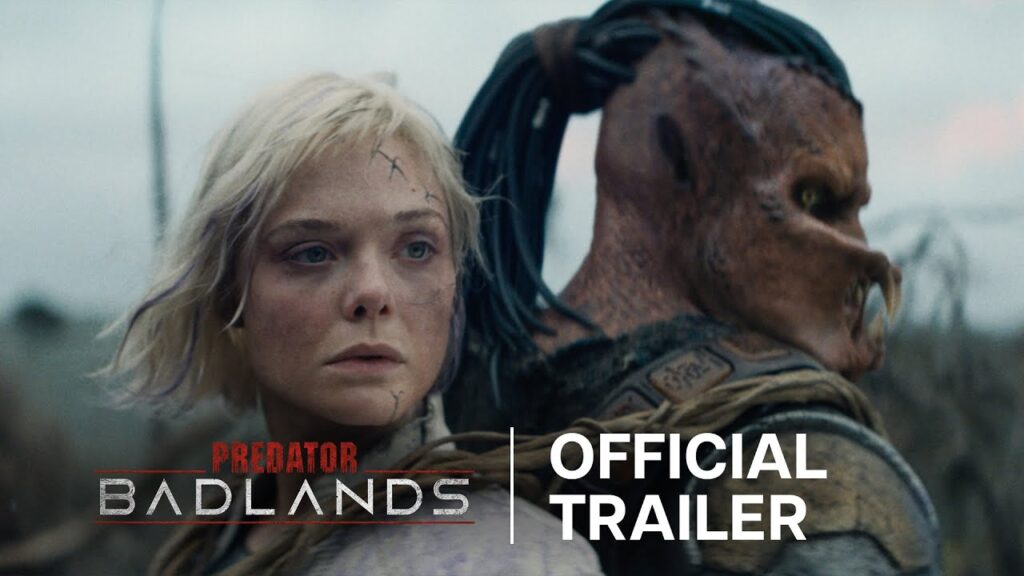Predator: Badlands isn’t just another installment in the long-running sci-fi franchise — it’s a creative evolution. Director Dan Trachtenberg, the visionary behind Prey and 10 Cloverfield Lane, has redefined the Predator not as a mere monster, but as a mythic force — one that reflects our own evolution as humans and hunters.
After a record-opening for the franchise, Predator: Badlands (released November 7 2025) has left fans buzzing with questions. The ending wasn’t just an adrenaline-filled finale — it was a deliberate setup for the next chapter in the Predator universe.

The Predator: Badlands New Design: Evolution Meets Tradition
One of the most striking changes in Badlands is the creature itself. This isn’t the same hulking jungle-stalker from 1987. Trachtenberg’s version introduces sleeker armor, bio-organic weapons, and a more primal yet intelligent aesthetic. The faceplate design hints at ancient tribal influence, while the body movement feels both feral and tactical — a deliberate mix that suggests the Predator species is evolving across generations.
According to production insiders, the visual team wanted to explore how Predators might adapt to different planetary ecosystems — the “Badlands” desert environment, in this case, forcing them to become more resourceful hunters. This creative decision turns the alien hunter into a living metaphor for adaptation and survival — traits that have always defined humanity itself.
Redefining the Hunt
Traditionally, Predator films centered on military might vs. alien dominance. Predator: Badlands changes that equation. The hunt here feels more ritualistic and philosophical than ever before. The Predator no longer kills for sport — it tests worthiness. Every kill, every encounter seems to follow an ancient code, echoing themes of balance and cosmic justice.
This shift in motive humanizes the creature in subtle ways. It’s no longer just the villain — it’s the judge, executioner, and, perhaps, mirror of our violent instincts. The idea that the Predator hunts those who themselves embody aggression creates a new layer of moral depth in the franchise.
A Hunter in the Wasteland
When it’s juxtaposed with the burned out deserts of Badlands, this entire world becomes a mirror for the Predators’ minds — cruel, unforgiving, and raw with its focus on survival. In the sense that lush jungle abandoned for desolate terrain represents development/ progress, and visually to suggest “(the creature) no longer has need for cover” (He was once an ambuscade predator; now he’s at the top.).

The filmmakers are said to have studied up on desert fauna and hunting behavior — from the scorpion to lizards, as well as the desert wolves that we tend not to see when they’re around — in order to inform the creature’s patterns of movement. This realism also serves to root the alien in a world that is at once otherworldly and all too familiar.
Expanding the Mythos
Trachtenberg’s biggest achievement may be in bridging old and new Predator lore. Predator: Badlands drops subtle clues about the species’ hierarchy — markings, ancient weapons, and a cryptic prologue suggesting an inter-clan war among Predators.
These hints suggest that the film could be laying the foundation for a larger “Predator Universe” — one exploring different tribes, codes, and hunting grounds across centuries. For longtime fans, this evolution feels organic and overdue — a way to transform the Predator from a repetitive creature-feature villain into a mythological symbol of evolution itself.
The Predator as Metaphor
Predator: Badlands isn’t really about the Predator’s victims. It’s about what the Predator stands for—the clash between our civilized world and those deep, wild instincts we try to ignore. As we get more wrapped up in our tech and drift further from nature, the Predator shows us exactly what we’ve left behind: that fierce, gut-level drive to survive.
Badlands gives the creature a fresh spin, changing up its motives and personality. That’s what keeps the Predator scary but also gets you thinking. It’s sci-fi action with something deeper going on underneath.
Conclusion:
And in Predator : Badlands, Dan Trachtenberg has reached the successful but seldom entertained unique vantage point of breathing new life into a decades-old property not with replicating what audiences have seen, but by embracing growth. The new look of the Predator is more than skin deep and symbolic of not just survival, but going through an evolutionary change in how it hunts.
The result? Predator: Badlands that isn’t just a continuation of the Predator series — it’s an elevation.


